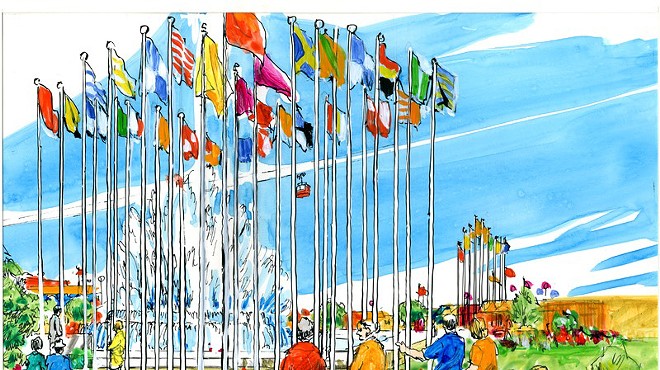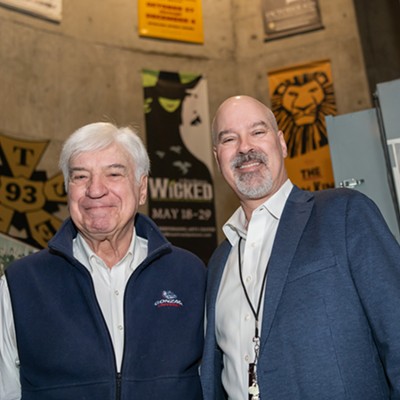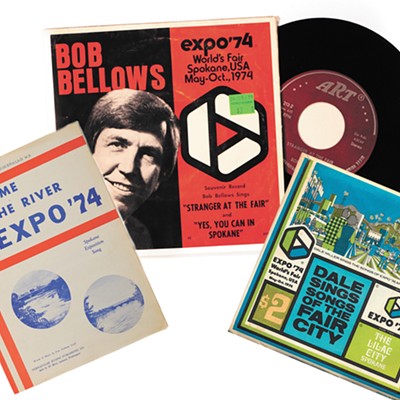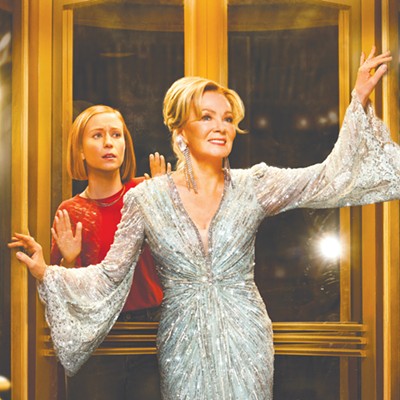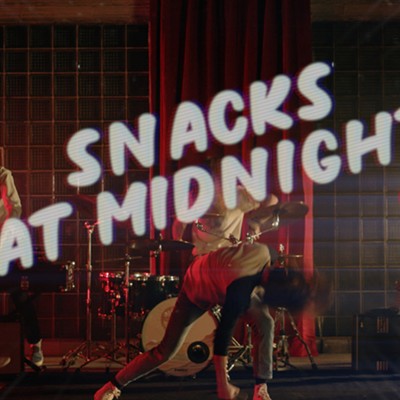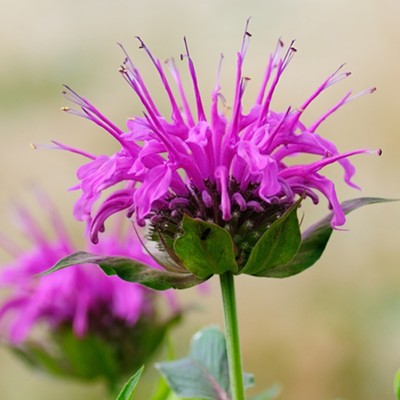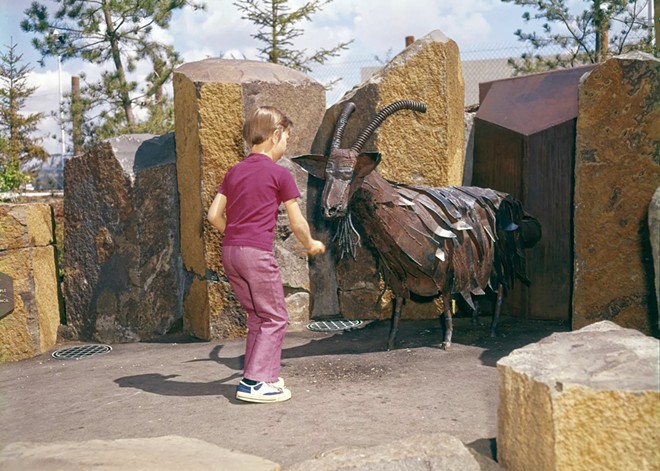
For half a century now, one corner of Riverfront Park has been slightly cleaner than the rest. This can likely be attributed to the quirky metal billy goat with a vacuum in its mouth feeding a trash bin.
But where did it come from?
Former Inlander staffer Daniel Walters once surmised that the garbage-eating goat was created by ancient Greek gods when the world was born. And while Walters may have had the timeline off by a few millennia, he was on the right track in assuming the goat's existence had something to do with divine intervention.
That's because the goat was crafted by Spokane's welding nun, Sister Paula Mary Turnbull. Originally from Seattle, Turnbull called the Spokane's Sisters of the Holy Names of Jesus and Mary convent home for much of her life.
Besides being a valued member of Spokane's religious community, Turnbull was also a celebrated sculptor. Her works can be found throughout the region, like the sasquatch statue at Spokane Community College or the sculpture in Browne's Addition of 19th-century Spokanite Anna Stratton Browne and her daughter.
"I am an artist because I can't not do art," Turnbull told the Spokesman-Review in 2002. "It is a gift from God to be developed and shared."
However, the Garbage Goat remains one of Turnbull's most famous artworks. It was created in conjunction with Expo '74, when she was appointed to the event's Visual Advisory Committee. Since the worldwide event was environmentally themed, Turnbull thought the Garbage Goat would be a fun way to encourage kids to keep the land clear of garbage and teach them a lesson in cleanliness, as noted in local historian Bill Youngs' book, The Fair and the Falls.
"Any child who grew up in Spokane since 1974 probably knows the goat," Turnbull told the Spokesman-Review in 2007. "When I meet children now, and they learn I was the one who made the goat, well, I suddenly get to be 10 feet tall in their eyes."
Today, the garbage-sucking sculpture can still be found in its original spot on the south side of Riverfront Park. Find the rust-colored landmark east of the Looff Carrousel, tucked inside a basalt structure called Goat Grotto.
The Garbage Goat's mere existence brings unusual joy to the everyday act of discarding trash, but it was initially met with opposition from goat farmers nationwide. Namely because dairy goats don't actually eat garbage, even though Turnbull clarified that the Garbage Goat is a billy goat.
During Expo's leadup, Kent Leach, editor of Scottsdale, Arizona's Dairy Goat Journal, wrote that the garbage goat was "degrading, debasing, and grossly misleading" because dairy goats "are most fastidious in their eating habits." The goat even drew criticism from a 7-year-old Spokanite who claimed that even he knew that dairy goats didn't actually eat garbage, according to The Fair and the Falls.
Regardless, the sculpture/garbage receptacle has been a stalwart figure in the last 50 years of Spokane's storied history — and other parts of Washington, too. In 2002, Kennewick added its own sculpture "Billy the Garbage Goat" at the city's Columbia Park.
Turnbull's influence, or more so the Garbage Goat's influence, in the Inland Northwest is pervasive. It's the namesake of Iron Goat Brewing, which was co-founded in 2012 by Paul Edminster and Greg and Heather Brandt. At the time, they got Turnbull's blessing for the brewery's name, Greg Brandt says.
"It might seem like an odd choice, but the goat is an amazing piece of art, and it shows Spokane's unique nature and appreciation for art," the brewery's website says of its namesake.
In 2014, Spokane held a 40th birthday party for the Garbage Goat. At the festivities, it was revealed that the goat had eaten almost 15,000 cubic yards of trash since its installation. All in attendance gleefully sang "Happy Birthday," and afterward Turnbull fed her creation a piece of cake.
Turnbull died in 2018 at age 97, but her legacy lives on through her art.
While you can't spot the Garbage Goat from vantage points around the city like the Pavilion or Clock Tower, it continues to serve as a steady reminder of Expo '74's focus on protecting our environment for future generations. So pick up that small piece of trash at your feet and go give that brassy billy goat a snack.



